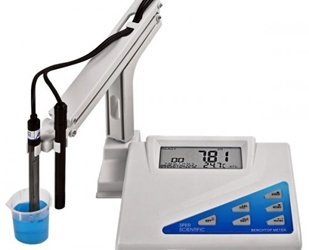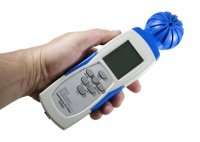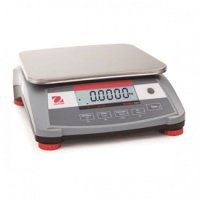pH Testers: How to Read Specifications

A pH tester is a device used to measure the acidity or alkalinity of a solution.
There is an extensive range of pH testers available at Instrument Choice, each with different specifications. So, to help you select the best pH tester for your application, we have put together a glossary of key terms and definitions you are bound to encounter in pH tester specifications.
Electrode
The electrode is the sensor used to measure the pH value of a substance.
Measurement Range
Specifications will define and display a pH tester’s measurement range capability as the minimum and maximum values.
Resolution
Refers to the smallest possible value that your pH tester can display. For example, a pH tester with a resolution of 0.01pH will read to the nearest 0.01.
Accuracy
Accuracy is the closeness of a measurement to a specific value. Specifications will express the accuracy of a device as a range, plus or minus a set amount—for example, ±0.1pH.
Automatic Temperature Compensation
The temperature of a sample has a substantial effect on the accuracy of pH readings. With automatic temperature compensation (ATC), your device will automatically account for the sample temperature when taking pH measurements and correct the displayed pH value accordingly, resulting in the most accurate measurement possible.
Calibration
Device specifications will outline whether or not a pH tester can be user-calibrated, and if so, to how many calibration points. Calibration is essential to ensure accuracy.
|
IC TIP: Our scientists recommend looking for a pH tester with a minimum of two calibration points. |
Minimum Sample Volume
Refers to the smallest sample volume required for a pH tester to perform an accurate pH measurement.
Sampling Rate
The sample rate or time is how long it will take the pH tester to measure pH and obtain a stable result.
Single and Double Junction
When selecting a pH tester, the junction is a significant physical characteristic of the electrode you must consider. There are two main types:
- Single junction: Single junction electrodes put the reference electrode system in contact with the sample to be measured. These are the most economical and work well in general purpose applications.
- Double junction: Double junction electrodes isolate the reference electrode, minimising the risk of contamination to the reference electrode. Double junction electrodes should be used on samples that contain sulphides or heavy metals to prevent contamination of the reference cell.
Operating Conditions/Temperature:
For accurate measurements, pH tester specifications will detail a device’s operating temperature range. The operating range will display as a minimum and maximum temperature, sometimes with the addition of a humidity value, expressed as a percentage.
Conclusion
When searching for a pH tester, it is essential to understand pH tester specifications to select the best product for your needs and budget.
or want more terms and definitions? Contact an Instrument Choice Scientist: Call 1300 737 871 or email [email protected].
Related Article
Also interesting
The Instrument Choice team of scientists regularly reviews new and popular products, so you can make more informed decisions when searching for the perfect scientific instrument for your application.
This edition reviews the IC-800050 Datalogging Indoor Air Quality CO2 Meter, a handheld indoor air quality assessment and data logging tool that accurately measures CO2, temperature, relative humidity, dew point and wet bulb temperature.
Get our scientists’ review of the IC-800050 Datalogging Indoor Air Quality Meter

Digital Scales come in all shapes and sizes and for an enormous variety of applications. Selecting the correct scale for your needs and budget can be difficult. For this reason, our scientists have created a list of 7 key criteria you should consider when searching for your digital scale.
Get your exclusive guide: “How to Choose a Digital Scale” here


